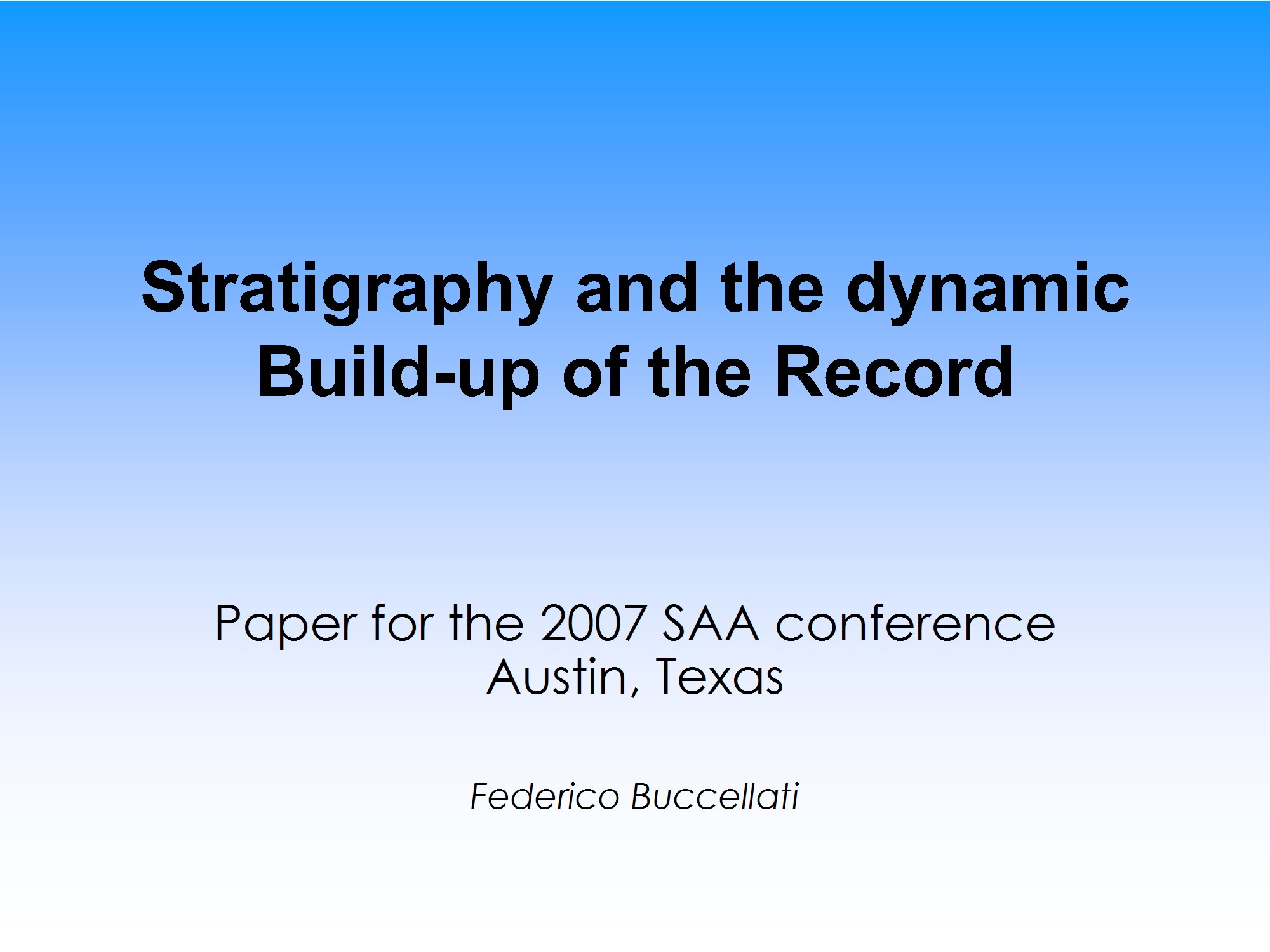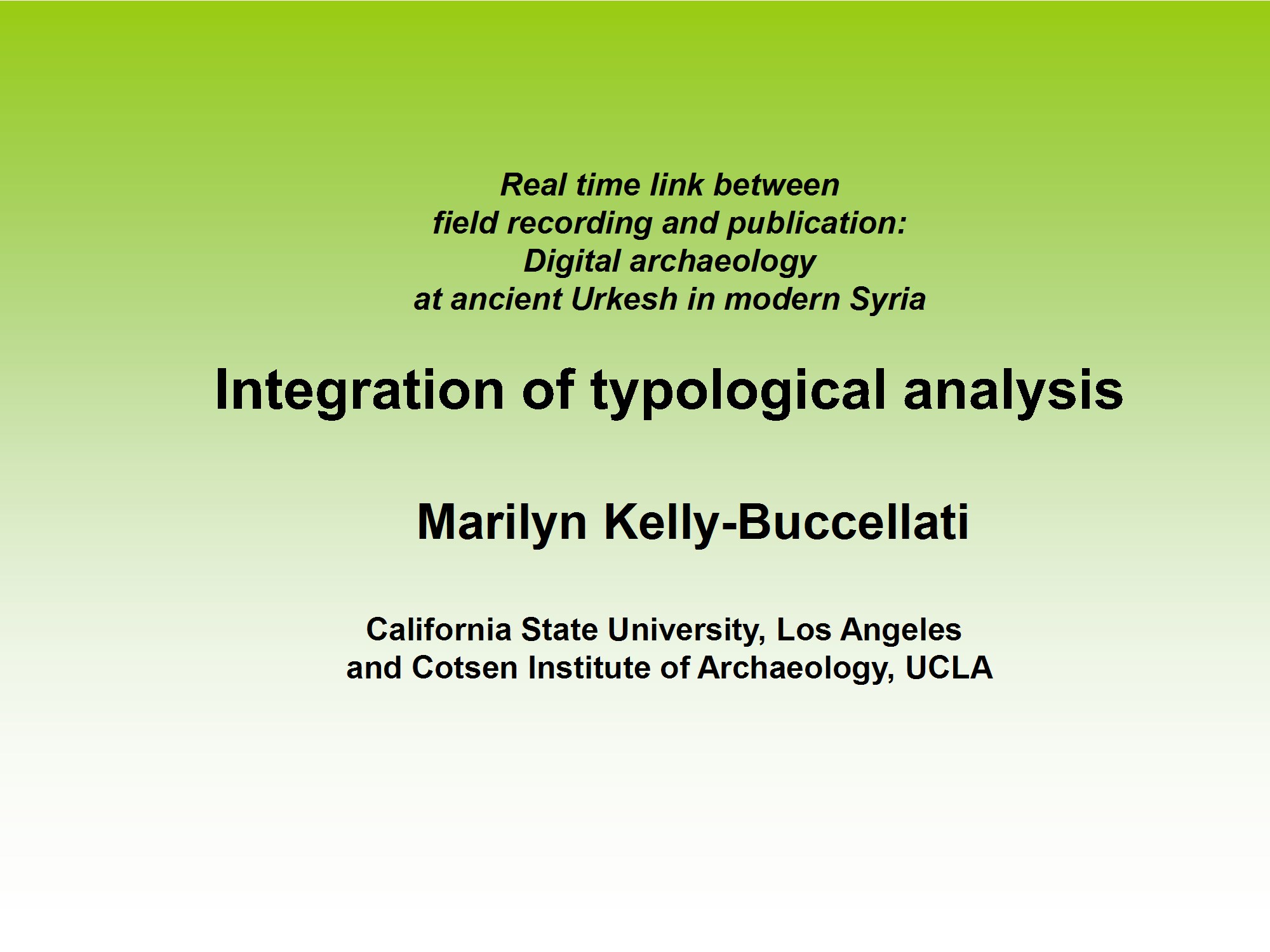Back to top: Public Presentations
Introduction
This page displays public presentations delivered by staff members of the Urkesh/Tell Mozan Archaeological Project.
The presentations are listed in chronological order by year and month and alphabetically by author’s surname (select entries from the left bar).
Back to top: Public Presentations
2007
Back to top: Public Presentations
April
Back to top: Public Presentations
April 27
- Walker, James L.: “The view from an excavation unit:
field data collection, entry, and
display”
Oral presentation given on April 27, 2007.

PDF of the slides available at this link.
Back to top: Public Presentations
April 28
- Buccellati, Federico A.: “Stratigraphy and the dynamic Build-up of the Record”
Oral presentation given at the 2007 SAA Conference at Austin, Texas on April 28, 2007.

PDF of the slides available at this link.
- Buccellati, Giorgio: “Theoretical principles and website applications”
Oral presentation given on April 28, 2007, at the conference Real time link between field recording and publication: Digital archaeology at ancient Urkesh in modern Syria.

PDF of the slides available at this link.
- Kelly-Buccellati, Marilyn: “Integration of typological analysis”
Oral presentation given on April 28, 2007, at the conference Real time link between field recording and publication: Digital archaeology at ancient Urkesh in modern Syria.

PDF of the slides available at this link.
Back to top: Public Presentations
2012
Back to top: Public Presentations
September
Back to top: Public Presentations
September 13
- “Buccellati, Giorgio: “Towards a Linguistic Model for Archaeology”
Oral presentation given at the Vinogradov Institute of the Russian Language, Russian Academy of Sciences, in Moscow, on September 13, 2012.
PDF of the presentation available at this link.
Abstract
“Archaeological theory has developed through a series of stages that, especially in Great Britain and the United States, has relied heavily on current philosophical trends. Recent concerns have focused especially on matters of interpretation, and two special areas of interest have been cognitive sciences (C. Renfrew) and what was originally termed contextual archaeology (I. Hodder). I have been addressing the same concerns, but from a different point of view.
On the level of theory, I have come to emphasize what neither the archaeologists nor the philosophers have sufficiently recognized, namely the fundamental importance of the concept of a broken tradition. We deal with cultures for which there are no living carriers, hence no competence with regard to self-understanding. Since hermeneutic canons presuppose continuity of experience and of expression, we must focus more directly on matters of method, in an effort to establish objective criteria that may allow us to overcome the 'brokenness' of the tradition.
I do so by aiming to identify distributional patterns that may testify to the coherence of the initial perception, and may accordingly train our own perception to respond to the same objective stimuli. Using the metaphor of the 'secret kinship' adopted by Roman Jakobson, I want to establish formal regularities and through them identify the underlying, living inspiration. It is on this that I feel we can base a proper semiotic analysis.
The complexity of the archaeological record is compounded by the enormous quantity of data excavated. Both aspects are ideally dealt with through digital applications that emphasize the method more than the technique. The method we propose is a grammatical one, in the sense of a closed syntactical and syntagmatic categorization system that allows statements of predictability and of nonoccurrence.”
Back to top: Public Presentations